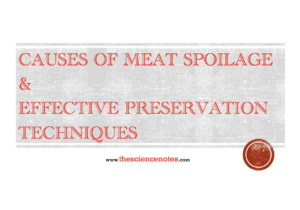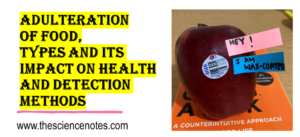
Causes of Meat Spoilage and Effective Preservation Techniques
Discover the primary causes of meat spoilage and effective preservation techniques to keep your meat fresh for longer. Read more
Your Trusted Source for Science Notes

Discover the primary causes of meat spoilage and effective preservation techniques to keep your meat fresh for longer. Read more

Discover the impact of food additives on your health and learn how to make informed choices about what you eat. Read more

"Comprehensive notes on food adulteration - causes, types, detection, and prevention strategies. Get educated now." Read more

Axons transmit signals away from neurons, while dendrites receive signals from other neurons. Important distinction Read more

Discover the distinguishing characteristics of Angiosperms and Gymnosperms. Explore their unique features, reproduction, and ecological significance in this informative guide. Read more

Learn about the difference between monocots and dicots, including their seed structure, leaf venation, and floral characteristics. Essential knowledge for botany enthusiasts. Read more

Algae are aquatic, autotrophic organisms, while fungi are heterotrophic, non-photosynthetic organisms. Learn more here. Read more

Learn the key differences between plants and animals, from cellular makeup to mode of nutrition and reproduction. Fundamental biology made easy. Read more

What is moisture content? Any water included in a food product is considered to have a moisture content. Many factors, including ambient moisture from the... Read more

What is Vitamin D? Vitamin D is a pro -hormone. It implies that vitamin D becomes a hormone in our body. It is a fat-soluble vitamin... Read more